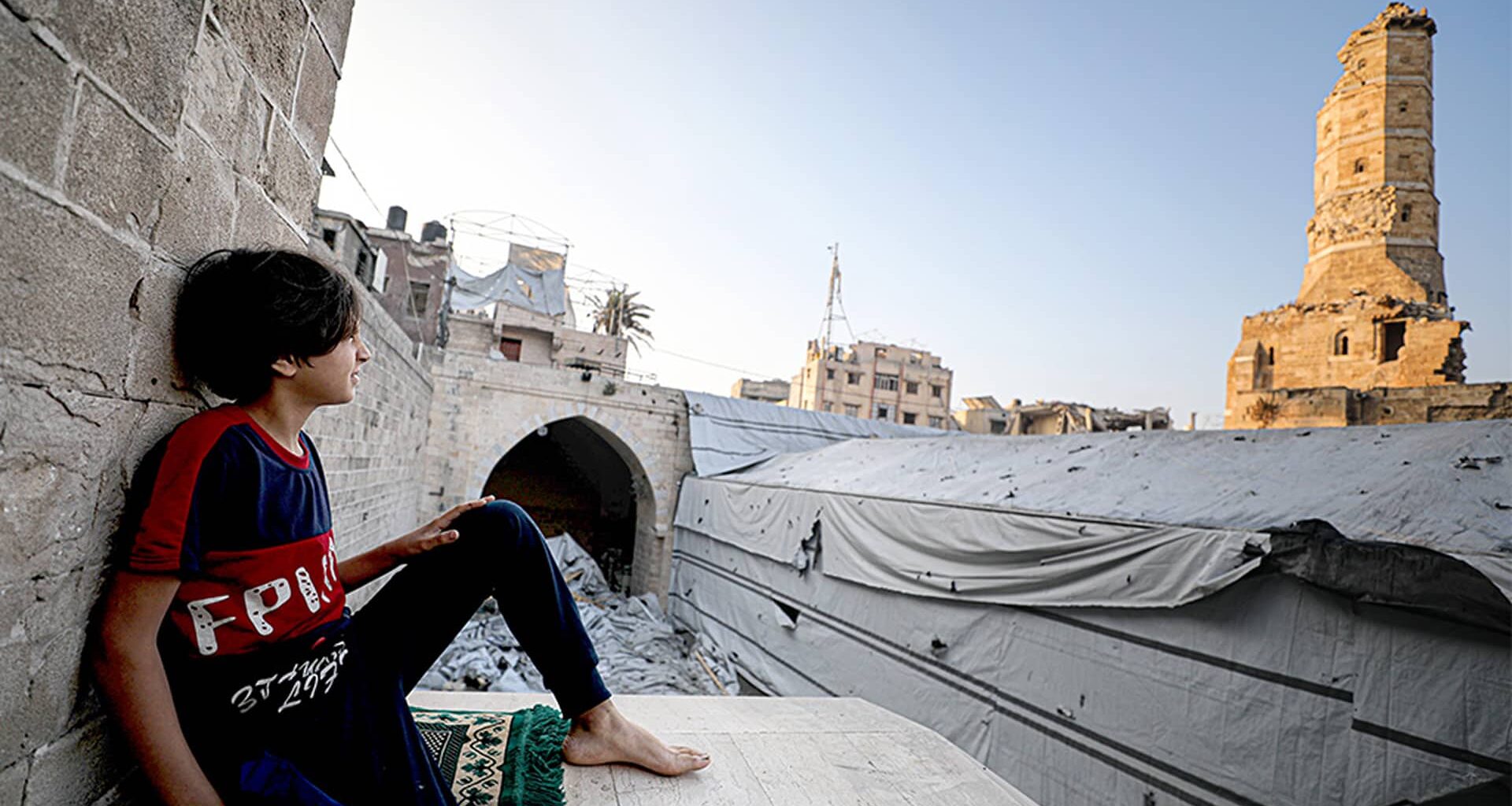In recent days, the Intiqal team worked with volunteers from the Holy Family Church to save the contents of the Gaza City archaeological store. It had previously placed security guards at the site and carried out regular checks after the IDF broke into it in early 2024, after which desperate Palestinians stripped it of shelves and boxes for firewood.
Right now, Jehad Abu Hassan says survival is the main priority for Gazans, but he believes cultural heritage could ultimately be a key part of a post-war plan. “You’d have to restart from almost zero, to build again and say to the world that Gaza is not only the images of violence and despair,” he says, “but we have culture, we have history, we have people on this land.”
In the past two years, top international courts have opened cases into alleged war crimes committed by Hamas and Israel, which deny the charges. Wiping out the cultural heritage of a people is part of an ongoing lawsuit at the International Court of Justice, where South Africa has accused Israel of genocide; a case that Israel said it rejected “with disgust.”
The 1954 Hague Convention, to which Palestinians and Israelis are signatories, is supposed to safeguard cultural landmarks from the ravages of war. There is recognition that monuments, archaeological sites and museums are all part of people’s history – the religious and ethnic threads which connect them to a place and make up their identity.
Israel blames Hamas for the destruction of important historic sites. The Israeli military tells me “Hamas deliberately embeds its military assets within densely populated civilian areas – Hamas acted and continues to act in the vicinity of, or beneath, cultural heritage sites.”
“The IDF does not seek to cause excessive damage to civilian infrastructure and conducts strikes solely based on military necessity. In accordance with international law, careful consideration is given to the presence of sensitive sites,” a statement says.
“This awareness is a central component in the planning of operational activity, and every effort is made to minimise harm to civilian infrastructure and non-involved civilians. Strikes involving potential risk to sensitive structures undergo a rigorous and multi-layered approval process.”
A twist of fate has preserved another collection of impressive treasures from Gaza’s past. A selection is currently on show at the Institute of the Arab World in Paris and is being used to tell the territory’s little-known history, as an oasis, open to the world, at a crossroads of civilisations.
“With what’s happened, they have a new emotional impact,” says the curator, Elodie Bouffard, when I visit.
There is an abundance of vases, statues, columns and tiny lamps. The centrepiece of the exhibition is a huge 6th Century mosaic from a church, decorated with animals and a grapevine, found by workers digging a road in Deir al-Balah.

